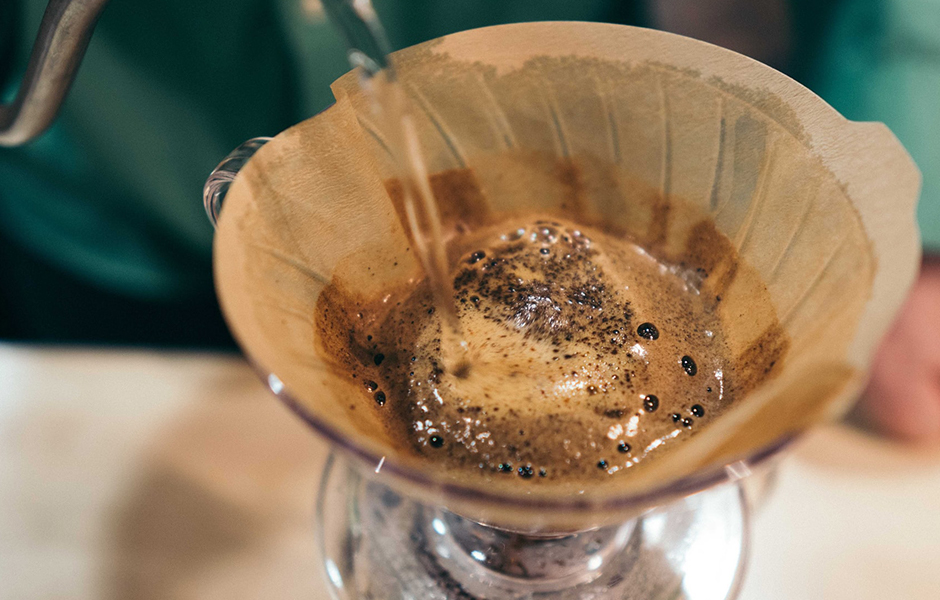Coffee filters are an essential piece of kit when it comes to brewing coffee. In fact, the filter is solely responsible for what can and cannot make it into your mug, ultimately influencing flavour. Most baristas and keen coffee enthusiasts lean towards paper filters due to their effectiveness and simplicity. But should you purchase bleached or natural paper filters?
We discuss all in our latest blog post.
The origin of paper filters
The paper filter was originally invented in Dresden, Germany, by Melitta Bentz. Sick of finding coffee grounds amongst her coffee, Melitta started to experiment with different materials around her house. Melitta settled on a piece of her son’s blotting paper, which was most successful at removing unwanted coffee grounds from her brew. On July 8th, 1908, the paper coffee filter was patented by Melitta Bentz, used later by her company Melitta Bentz Company.
Bleached paper filters
Although there was a concern in the ‘80s that chlorine bleached filters might be dangerous, it’s now widely accepted that they’re safe to use for brewing coffee. What’s more, the bleaching process won’t add any unwanted flavours within your drink.
However, the environmental impact of bleaching is much higher than natural paper filters. Chlorine bleaching is the most significant environmental issue due to it producing chemicals that run the risk of being improperly disposed of. Due to this, bleaching practices in the western part of the world are beginning to favour alternatives, such as hydrogen peroxide and oxygen bleaching. In fact, Scandinavia, for example, has replaced their chlorine process with more environmentally friendly methods such as Oxygen bleaching.
Paper filters are bleached solely for cosmetic reasons – there are no additional benefits to the process. Due to their bright white colour, many argue that they’re more appealing over their natural brown paper filter counterparts.
.jpg)
Natural paper filters
Unbleached filters, or natural filters, don’t heave the bright white colour like their counterparts. Instead, they’re a light or dark brown colour, as they’re naturally processed from wood and forego artificial whitening. For this reason, they’re considered to be the best option when considering the environmental impact of the filter.
Despite this, due to the process, some complain about a ‘papery’ taste when using natural paper filters. Whilst this is likely to only be subtle, and may also be observed with bleached paper filters as well, there are a number of steps you can take to prevent this from happening.
How to remove the paper taste
Rinsing the natural paper filters will help avoid the unpleasant paper taste in your coffee and at the same time preheat your brewing device.
Here’s a quick method to get a perfect coffee with natural paper filters:
- Place your filter under the brewing device
- Pre-wet the filter by pouring hot water over it
- Discard the water
- If needed, rinse again
Continue to brew your coffee as usual

Filter quality and thickness
Bleached VS unbleached isn’t the only differentiator consumers should be aware of. In fact, there are a number of characteristics of a coffee filter that ultimately impact coffee flavour.
Thickness – Close attention should be paid to the thickness of the filter. A thin filter will allow water to flow through too quickly, resulting in a poor extraction. On the other hand, thicker filters may prevent some wanted oils from entering the brew.
Quality – As with anything in life, it’s a case of quality over quantity. The quality of your paper filter will ensure a clean coffee profile and good brew flow. Even the slightest variance here can throw of the extraction of your coffee, so its important to find a filter you like and stick with it. Consistency is key.
To bleach or not to bleach?
It really comes down to personal preference. Natural filters may have an effect on the taste of your coffee, but its likely to be negligible.
For those that do notice a difference in taste, bleached would be best for you. Keep an eye out for a TCF label, which indicates that the filters are chlorine free and bleached using one of the previously mentioned bleaching methods.
If you’re buying for the environment, natural paper filters will be best for you, as they forego the harmful bleaching process altogether. Just double rinse the filter begore use if you’re concerned with the papery taste.
Finally, its important to note that paper quality matters. A cheap bleached paper filter is likely to have as much of a papery taste as a natural paper filter, so ensure you’re always purchasing high-quality filters for the best tasting coffee.



